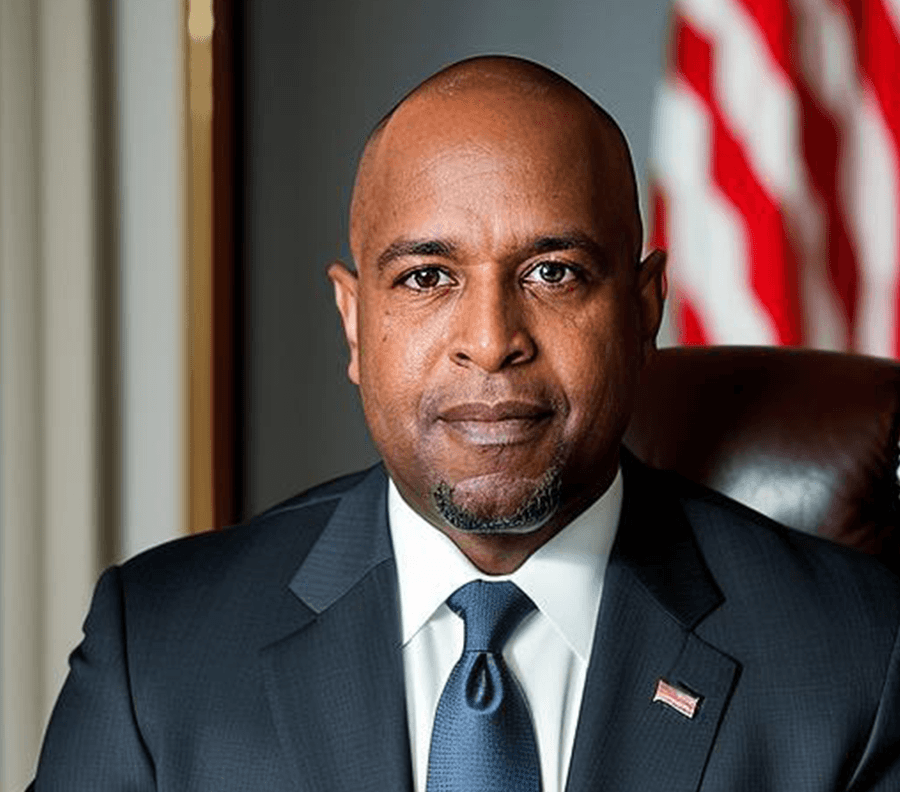Igniting Individual Motivation: Discovering Your 'Because' for Lasting Drive
Motivation often seems like a well that can run dry at the most inconvenient times. However, the key to consistently tapping into motivation might...
9 min read
 Mick Hunt
:
Mar 12, 2024 8:00:00 AM
Mick Hunt
:
Mar 12, 2024 8:00:00 AM
In the evolving leadership landscape, the introduction of the 'Because' philosophy marks a significant shift in how leaders articulate their vision and influence their teams. Traditional leadership often relies on a command-and-control approach, but the 'Because' mindset is rooted in explaining the reasons behind decisions and strategies.
By leading with 'Because,' leaders provide clarity, create alignment, and foster an environment where team members understand the deeper purpose of their work. This approach lends credibility to leadership and empowers employees to contribute meaningfully as they grasp the context and significance of their roles within the larger organizational mission.
Integrating the 'Because' philosophy into existing leadership styles can be transformative. Communicating the rationale behind every directive and initiative requires a conscious effort.

When team members comprehend the 'why,' their buy-in and commitment to the organization's goals are reinforced, leading to enhanced collaboration, innovation, and a shared sense of purpose.
Moreover, using 'Because' can streamline decision-making processes by providing a clear framework for explaining and evaluating choices—leaders can more effectively persuade and motivate their teams by presenting transparent and logical justifications.
Utilizing the 'Because' philosophy can also be a powerful tool for inspiring change. Change is a constant in business, yet it often meets resistance. Leaders can pave the way for smoother transitions by preempting the resistance with understandable explanations. This approach can mobilize individuals and teams to move toward new objectives with a clear understanding of the expected outcomes and the reasons driving change.
While adopting 'Because' leadership requires careful consideration of the audience and context, its versatility across diverse organizational environments suggests its potential to shape the future of effective leadership.
The 'Because' philosophy in leadership embodies clear, cause-and-effect reasoning as a method to motivate and justify actions within an organization.
The essence of the 'Because' philosophy revolves around the rationale behind decisions and actions. I integrate this approach by always providing team members with the reasons for my directives. When I delegate tasks, I highlight what needs to be done and why it is important. This transparency in communication fosters understanding and alignment within the team.
Historically, leadership models have varied greatly, but the evolution of the 'Because' philosophy represents a significant shift toward inclusive and rationale-driven management.
I draw lessons from past leaders who excelled in involving their workforce by explaining causes and outcomes:
Leadership is evolving, with a drive toward connecting actions to reasons. I find that by articulating the 'why', leaders can foster greater engagement and accountability.
Historically, leadership often took the form of issuing commands without explanation. Now, I recognize the value of reasoned leadership—where every directive is accompanied by a ‘because’. I strive to tie each decision I make to a clear reason, ensuring my team understands the motivations behind my requests. This approach not only demonstrates respect for my team’s intelligence but also encourages them to think critically about their roles within the organization.
Example: Instead of saying, "Complete this report by Monday," I would say, "Complete this report by Monday because it will provide us with crucial data to inform our weekly strategy meeting."
Providing explanations empowers my team to make informed decisions. When they understand the reasons behind tasks, they can take ownership of their work and contribute ideas that align with the larger goals. This transparency in leadership creates a two-way street of trust and respect.
Example: I don't just ask for a marketing analysis; I explain that understanding market trends is crucial because it allows us to adapt our strategy to stay ahead of the competition.
Fostering an environment where knowledge and rationale are shared contributes to a culture of understanding. I make it a point to connect the dots between individual tasks and the overarching mission of our organization. By doing so, every team member can see how their contributions matter in the grand scheme.
Example: In team meetings, I discuss client feedback, highlighting how specific actions taken by team members led to positive outcomes because it’s important for everyone to see the real-world effects of our collaboration.
Utilizing 'Because' effectively in leadership communication can galvanize teams and clarify purpose, fostering an environment ripe for inspiration and action.
My use of the word 'Because' is crucial when I craft narratives that drive motivation. It frames the reasons for tasks and goals, making the objectives much more than edicts from above; they embody a purpose. For example, I might say, "We prioritize sustainability in our packaging because we owe it to our customers and the planet." This expression:
When I lead by example, 'Because' becomes a powerful ally. I don't simply ask my team to work overtime; I'm there with them, and I explain why. "I'm staying late because our project could revolutionize the way consumers experience technology." This approach:
The phrase 'Because' is instrumental when I'm sculpting a shared vision. It helps me to lay a clear foundation for what we're collectively striving towards. I articulate this by stating, "We're adopting new technology because it places us at the forefront of innovation." Embedding 'Because' here:
Incorporating the 'Because' philosophy into leadership guides every decision with a clear rationale, ensuring that choices are reasoned and grounded. I've discovered this leads to more informed and committed team efforts.
I clarify the 'why' behind decisions. By providing team members with the reasons, I foster an environment where decisions are:
I build trust by being consistent. My decisions are always backed by clear, logical reasons, which reinforces my credibility. This is reflected through:
When I implement the 'Because' philosophy in leadership, I focus on clarifying the reasons behind changes to foster better understanding and commitment.
Clearly Articulated Vision: I ensure that the vision for change is not only clear but also compelling. I communicate how our future state is beneficial by using a reason-based rationale.
Empathy and Understanding: I recognize the challenges employees face during change. I address their concerns by relating the 'because' to their situation.
Transparent Decision-Making: Transparency is key to overcoming resistance. I share the 'because' behind decisions, ensuring it resonates with those affected.
Example Scenarios:
Incorporating the 'Because' philosophy as a leadership approach requires careful examination of potential challenges. My objective is to ensure that while I articulate reasons and explain the rationale, these explanations are balanced and appropriate.
When I adopt the 'Because' philosophy in leadership, one challenge I face is the risk of over-rationalizing decisions. It's crucial for me to:
I must also understand that 'Because' has its boundaries as a leadership tool. In practice, this means:
Integrating the 'Because' philosophy into leadership practices requires understanding its nuances across different cultures and industries. This approach adapts communication strategies and aligns leadership actions with clear reasons tailored to specific organizational settings.
In the sphere of cross-cultural leadership, I recognize that the 'Because' philosophy takes on additional layers of complexity. Different cultures attribute varying significance to causality in communication. For example:
To navigate these differences, I have found that it is imperative to understand the preferred communication style of a given culture. This means offering explanations more liberally in low-context cultures and being more nuanced in high-context settings.
Each industry also presents unique challenges and opportunities for applying the 'Because' philosophy. For instance:
Understanding industry nuance is critical; in every case, the explanations I provide are tailored to the values, norms, and expectations of the respective industry.
Incorporating the 'Because' philosophy signifies a transformative approach where leaders articulate clear reasons behind their vision and decisions, fostering a culture of understanding and purpose.
I have observed a shift toward leaders prioritizing transparency and rationale in their decision-making processes. Future leaders will likely embrace the 'Because' philosophy by consistently providing clear, reasoned explanations for their actions and strategies. Here are specific ways in which this can unfold:
My analysis suggests that this shift towards a 'Because'-driven approach bears significant long-term potential for organizations. The two main areas where this impact is most discernible include:
In this era of rapid change and complex challenges, the 'Because' philosophy in leadership is more than a trend; it's a paradigm shift. It represents an evolution from hierarchical, directive leadership to a more collaborative, purpose-driven approach. As we embrace this philosophy, we are not just altering our leadership styles but reshaping the fabric of organizational culture and communication.
The Path Ahead for Purpose-Driven Leadership:
Implementing the 'Because' philosophy in leadership is poised to create a ripple effect that extends far beyond individual organizations. By fostering environments where purpose and rationale are at the forefront, leaders contribute to a broader societal shift towards more mindful, intentional, and responsible business practices.
This shift can influence not only how organizations operate but also how they contribute to global challenges and solutions.
As we stand at this crossroads, the choice is clear. Embracing the 'Because' philosophy in leadership is about enhancing organizational effectiveness and creating a more connected, empathetic, and purposeful world. The journey ahead is promising and starts with a simple yet powerful word: Because.
In closing, leading with 'Because' is more than a strategy; it's a commitment to a more enlightened form of leadership. It's a pledge to lead with authority, reason, empathy, and vision.
As leaders, let us embrace this approach, knowing that our reasons today shape the realities of tomorrow. Let 'Because' be the guiding star in our leadership journey, illuminating the path towards a future rich with purpose, understanding, and shared success.

Motivation often seems like a well that can run dry at the most inconvenient times. However, the key to consistently tapping into motivation might...

In team building, the concept of 'Because' serves as a compass for collective purpose. When teams operate with a clear understanding of 'Because,'...

In a world incessantly asking "Why?" the real magic lies in another, often overlooked question: "Because?" While the 'Why' of our actions, goals, and...